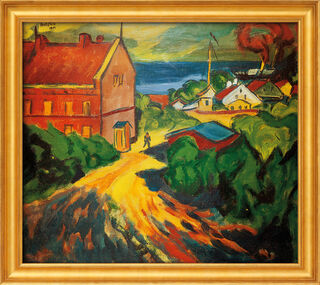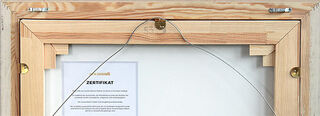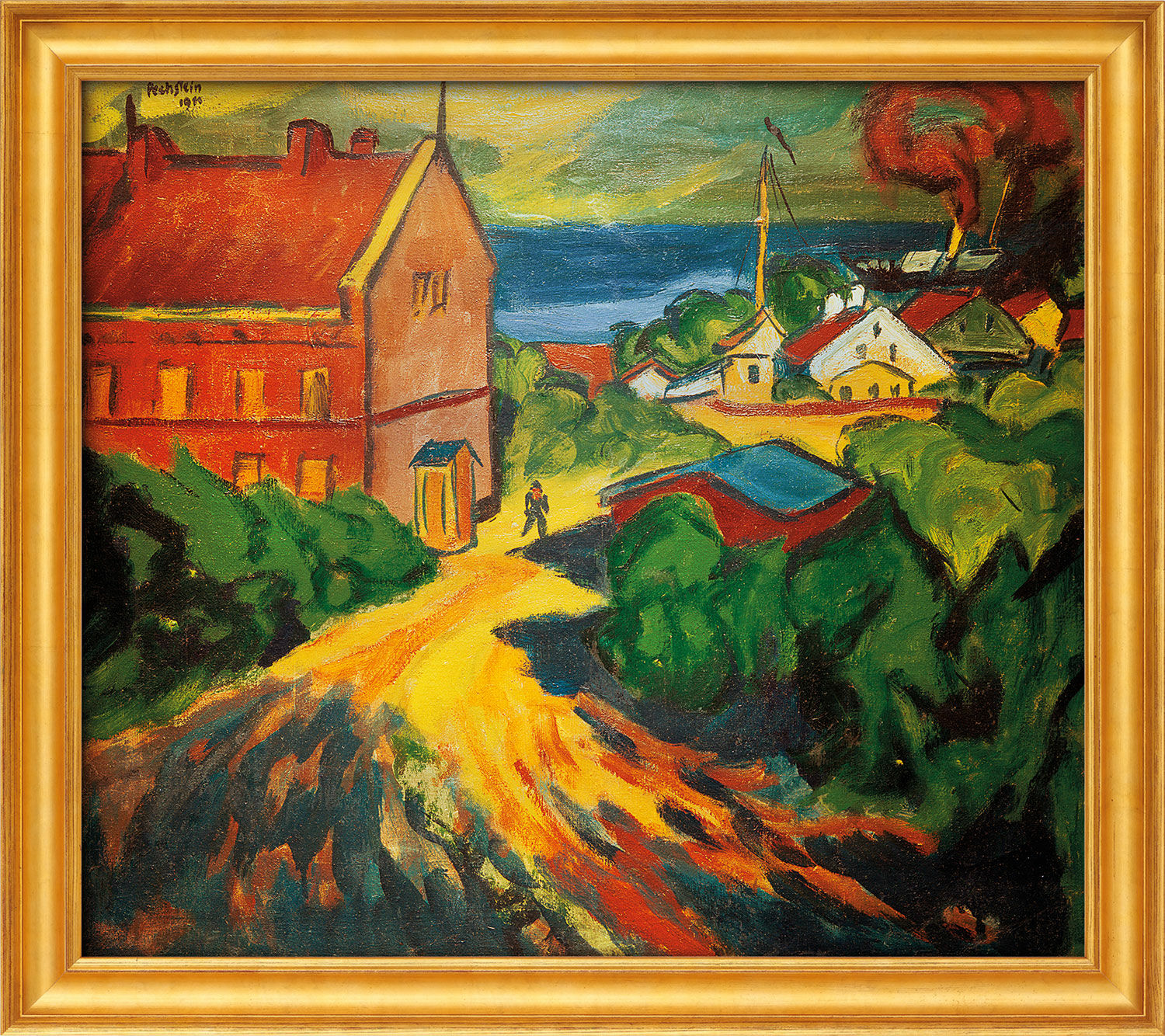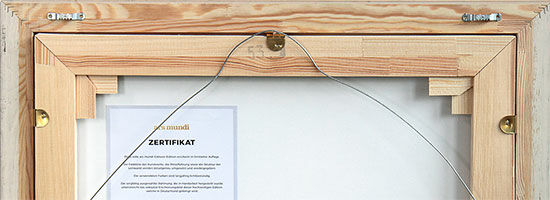Picture "The Red Officials' House in Nidden", framed


Picture "The Red Officials' House in Nidden", framed
Quick info
ars mundi Exclusive Edition | limited, 499 copies | numbered certificate | reproduction, Giclée print on canvas | on stretcher frame | framed | size 62 x 77 cm (h/w)
Detailed description
Picture "The Red Officials' House in Nidden", framed
Pechstein's "Red Officials' House" was auctioned at Sotheby's in 1999 for 419,000 pounds.
The original artwork was transferred directly onto 100% cotton artist canvas for a brilliant, authentic reproduction, using the Fine Art Giclée process and mounted on a stretcher frame. The motif surface with tactile and visible linen structure emphasises the painting-like effect. Limited edition of 499 copies, with a numbered certificate on the back. Framed in handmade, golden solid wood frame. Size 62 x 77 cm (h/w). Exclusively at ars mundi. © 2022 Pechstein Hamburg / Preetz.
Frame configurator
Customised picture frame

Frame configurator
Customised picture frame






Customer reviews
Frame variant: framed
Sehr ausdrucksstark, gute Qualität der Reproduktion.
Frame variant: framed
Der Glanz der Farben und auch die Qualität des Rahmens sind in der Realität noch viel besser als beim Kauf erhofft. Zudem war der Kundenservice wirklich schnell und hilfsbereit und der Liefertermin deutlich schneller als angegeben. Von daher: Daumen hoch!
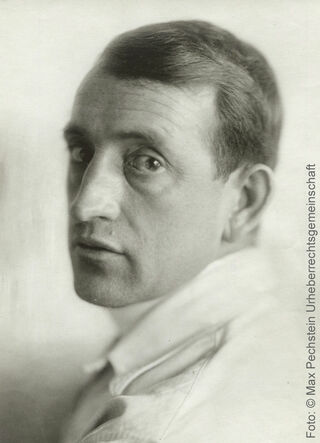
About Max Pechstein
1881-1955
Max Pechstein is considered today, as he was then, one of the most important representatives of German Expressionism. In spring 1906, he joined the artists' group "Die Brücke", which had been founded the previous year by Kirchner, Heckel, Schmidt-Rottluff and Bleyl. In the field of graphic art, he produced an oeuvre of over 850 woodcuts, lithographs and etchings in addition to his paintings.
What Tahiti was to Paul Gauguin, the Baltic Sea coast was to Max Pechstein: a paradise where he found peace, but above all great inspiration. From 1909 onwards, he travelled several times to Nidden on the Curonian Spit, where Lovis Corinth had worked as a young art student more than a quarter of a century earlier. However, when the Treaty of Versailles placed the Curonian Spit under Allied administration in 1920, the way there was blocked. In his own words, Pechstein had to "once again go in search of a spot of earth that was not overrun by painters, tourists and bathers". He found it in Leba, where from then on he spent his summers on a regular basis.
"For more than twenty years Max Pechstein went to the Baltic coast every summer, first to the Curonian Spit, then to Pomerania, which naturally connected him closely to our house. When he rented a room here with his first wife in 1921, he had no idea how attached he would soon feel to the small harbour town of Leba, for he fell in love with Marta Möller, the daughter of his innkeeper. The pristine nature with its beach lakes and the fishing boats in the harbour, the pipe in his mouth, tanned and the anchor tattooed, those things stayed with the passionate angler Pechstein until the end of his life, even when he and his wife could no longer go to Pomerania after the Second World War." (Dr. Birte Frenssen, Deputy Director at the Pomeranian State Museum in Greifswald)
Graphic or sculpture edition that was initiated by ars mundi and is available only at ars mundi or at distribution partners licensed by ars mundi.
Artistic movement that replaced Impressionism in the early 20th century.
Expressionism is the German form of the art revolution in painting, graphic art and sculpture, which found its precursor in the works of Paul Cézanne, Vincent van Gogh and Paul Gauguin in the late 19th century. The Expressionists attempted to advance to the primal elements of painting. With vibrant, unbroken colours in large areas and with the emphasis on the line and the resulting targeted suggestive expressiveness, they fought against the artistic taste established by the bourgeoisie.
The most important representatives of Expressionism were the founders of "Die Brücke" (The Bridge): Ernst Ludwig Kirchner, Erich Heckel, Karl Schmidt-Rottluff, Max Pechstein, Otto Mueller and Franz Marc, August Macke and others.
Masters of Viennese Expressionism are Egon Schiele and Oskar Kokoschka. Among the sculptors, Ernst Barlach is the most famous.
Fauvism is the French form of Expressionism.
Giclée = derived from the French verb gicler "to squirt, spurt".
The giclée method is a digital printing process. It is a high-resolution, large-format printout on an inkjet printer with special different-coloured dye- or pigment-based inks (usually six to twelve). The colours are fade-proof, i.e. resistant to harmful UV light. They have a high richness of nuance, contrast and saturation.
The giclée process is suitable for art canvases, handmade and watercolour paper as well as for silk.

